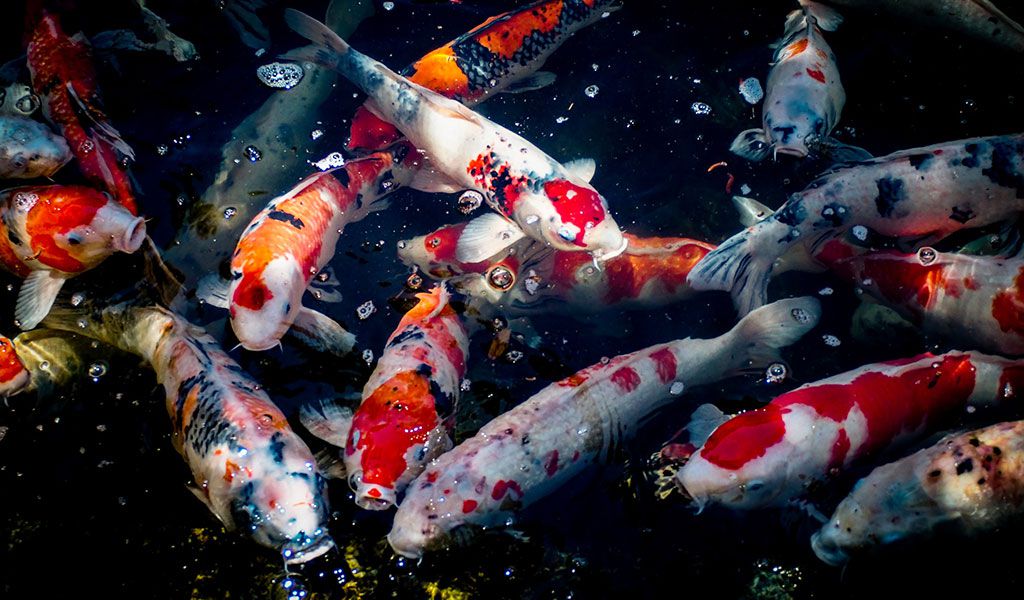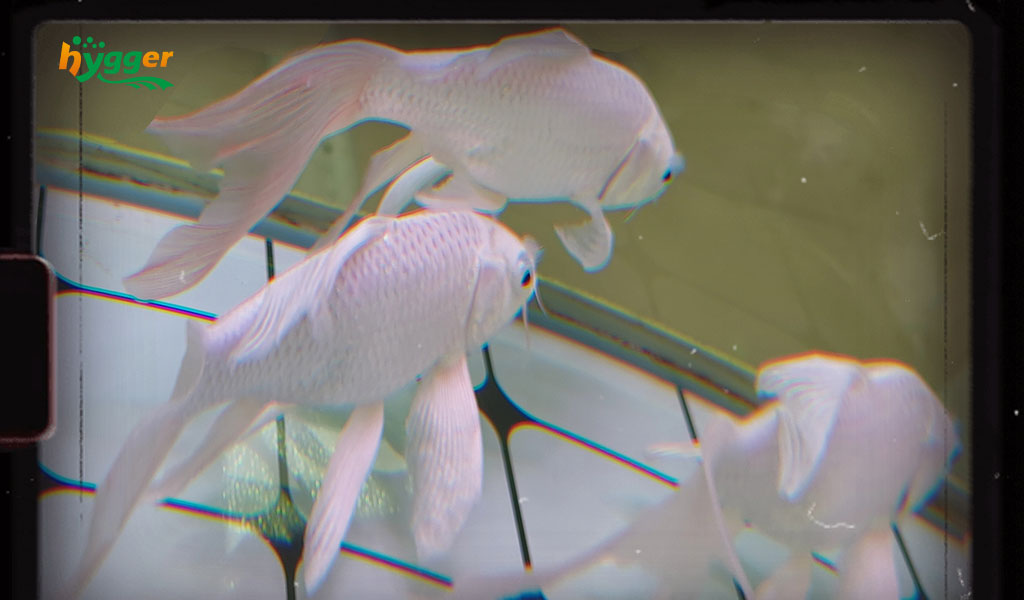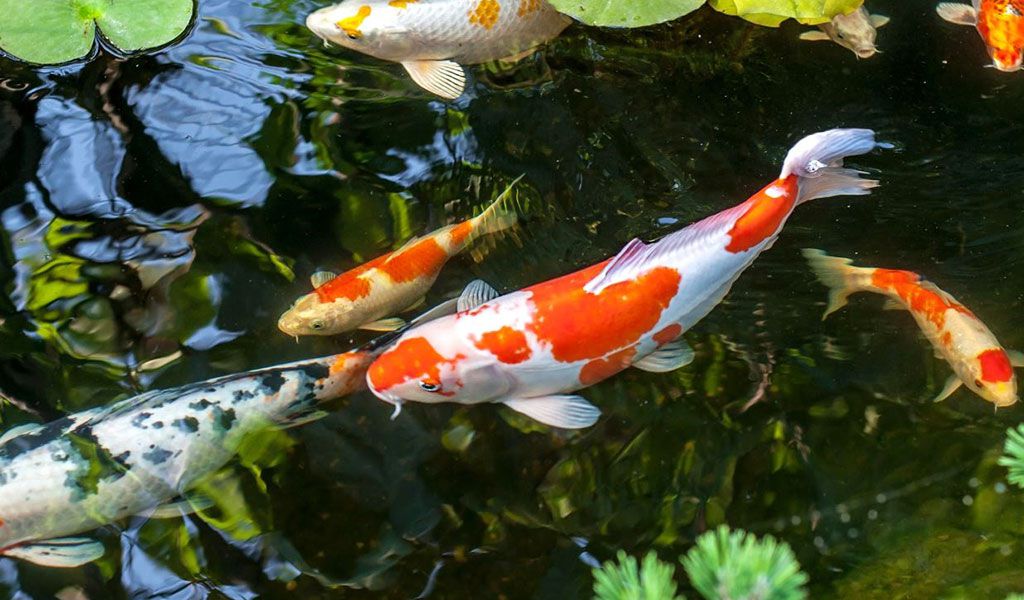Why does the koi fish tail bleed? It is a question that has puzzled aquarium enthusiasts. Nonetheless, before taking appropriate measures to address the issue, it is necessary to recognize the potential and root causes. In this article, we will cover the causes and treatment of the koi fish disease – bleeding koi fish tails.
Content Table
Do Koi Fish Tails Grow Back
Roles of koi fish tails
- Propulsion through the water: The tail, composed of fin rays and muscle, generates the necessary force and movement for the fish to swim.
- Communication: During courtship and breeding, male koi may display their tails in elaborate patterns and vibrant colors to attract mates. Also, koi fish may use their tails to signal dominance or submission to other fish, contributing to social interactions within a group.
- Temperature regulation: The tails help dissipate excess body heat by facilitating water circulation around the fish’s body. Tail movement aids in maintaining an optimal body temperature, especially during warmer periods.
Features of koi fish tails
- Injury or damage: If the tail is injured, the tissue and fin rays in the affected area may be damaged or lost.
- Wound healing: Once injured, fish will initiate a healing response. The damaged tissue will undergo a process of repair and regeneration. And the fish’s immune system works to prevent infection.
- Cell division and tissue Regeneration: During the healing process, blastemal cells that are responsible for regenerating the lost tissue and fin rays, start to divide and proliferate in the area of the injury.
- Tail development: Compared to the original tail, the newly grown one may initially appear smaller or different in shape, but it will continue to develop and grow. However, the regenerative capacity of the tail is limited. So, damaged or lost tails will not fully regrow to their original form.

Do koi fishtails grow back?
Many fish species can regrow fins and tails, which can be called regenerative capacity. It is beneficial from blastemal cells, which can divide and differentiate into the tissue that needs to be regenerated. However, some fish may not be able to regrow their fins and tails completely. Also, the severity of the injury and the age of the fish can affect the ability to regrow fins and tails.
While koi can regenerate scales and barbels, the regrowth of damaged or lost tails is not typically possible. Because the tissue and fin rays that make up the tail structure are usually permanently lost. The remaining tissue may heal over time, but it will not regrow into a fully formed tail.
Why Does the Goldfish Have Red Lines on Its Fins
Causes of red lines in fins
- Natural coloration
Some goldfish varieties naturally exhibit red or orange coloration in their fins. This can be a characteristic of certain breeds or genetic variations. And red lines in the fins may simply be a part of the fish’s natural color pattern.
- Blood vessels
The red lines in goldfish fins may be the result of the visibility of blood vessels. Goldfish fins are thin and translucent, allowing the underlying blood vessels to be more apparent. When light passes through the fins, the red color of the blood vessels becomes visible, creating the appearance of red lines.
- Inflammation or irritation
Red lines in the fins can also be indicative of inflammation or irritation. Fish infection, fin rot, or other health issues can cause redness in the affected areas. Inflammatory responses and bacterial or fungal infections can lead to red streaks or reddening of the fins.
- Physical damage
Trauma or injury to the fins can result in red lines. If the fins get torn, bitten, or damaged, blood vessels may become exposed, leading to the appearance of red streaks. Hence, just avoid sharp objects or incompatible tank mates in your tank or pond.

Cures for red lines in fins
Red lines can be signs of inflammation, infection, or injury. Here are some general steps to treat red lines in fins.
- Test water quality
Test water quality to check whether the water parameters are within the appropriate range or not. Because poor water quality can stress the fish and make it more susceptible to infections. Thus, you should perform regular water changes and maintain a clean and well-filtered living condition.
- Quarantine affected goldfish
If possible, move the affected goldfish to a separate quarantine tank. This helps prevent wide spread of infections to other fish, while it also allows for closer monitoring and treatment.
- Find the root cause
Just carefully observe the symptoms of goldfish, such as fin deterioration, behavioral changes, or loss of appetite. Then try to identify the root cause of the red lines looks like koi fishtail bleed, which could be related to infections, injuries, or other factors.
- Treatment
In the face of red lines caused by bacterial or fungal infections, it is better to consult a veterinarian or a fish health professional for appropriate medication. For example, antibacterial or antifungal medications.
- Add aquarium salt
Adding aquarium salt in appropriate doses to the quarantine tank can be a great option. Aquarium salt helps to reduce stress and support the immune system during the healing process.

Why Do the Koi Fish Tails Bleed
Causes of bleeding koi fish tails
- Fin nipping and aggressive behavior
Koi fish are known to display territorial behavior. Social hierarchy and territorial disputes can intensify during breeding seasons or when new fish are introduced to the pond or aquarium. In a densely populated pond or aquarium, dominant individuals may chase or nip at the tails of their weaker counterparts, causing injuries and subsequent bleeding.
- External injuries
Koi fishtails can be susceptible to external injuries, such as getting caught in sharp objects, rough handling, or predators. These injuries can cause cuts, tears, or punctures in the tail, resulting in bleeding.
- Bacterial or fungal infections
Bacterial or fungal infections can affect the fins and tails of koi fish, leading to inflammation and tissue damage. As the infection progresses, it can cause the tail to bleed. Poor water quality, stress, or injuries can make koi fish more susceptible to such infections.
- Parasite infection
Certain parasites, such as anchor worms or fish lice, can attach themselves to the fins and tails of koi fish, causing irritation, inflammation, and bleeding. These parasites need to be identified and treated promptly to prevent further damage.
How to treat bleeding koi fish tails
Once you find symptoms of bleeding koi fish tails, it is recommended to quarantine the affected fish immediately. Next, identify the root cause. Just test the water parameters, plus check for the signs of external injuries and infection.
If there is a visible wound or injury, you’d better clean the wound. Exactly, you can gently clean it using a mild antiseptic solution recommended for fish. It will be helpful to prevent further infection. During the cleaning process, you should be cautious not to cause additional stress or harm to the fish. Additionally, it is feasible to apply medications according to the status of bleeding tails. To address infections, using antibiotic or antifungal medications is effective.
Given below are some pointers:
| Status of koi fishtails | What can you do (Treatment) |
| Slight redness | Do regular water changes and maintain great water condition |
| Obvious redness with red edges | Increase water temperature & Add aquarium salt & Turn off the air pump |
| Redness with tail rot | Improve the water quality and apply medications |
Koi Fish Diseases That Cause Red Tails
In addition to bleeding fishtail disease, are there any diseases causing red tails? The answer is positive. For instance, Koi Herpesvirus and tail rot disease.
Specifically, Koi Herpesvirus, abbreviated to KHV, is a highly contagious and potentially deadly viral infection. The symptoms of KHV include a red or bloody discoloration in the fins and tail, lethargy, loss of appetite, and respiratory distress.
Moreover, tail rot disease is the result of bacterial infections. These infections are caused by opportunistic bacteria that take advantage of weakened immune systems or physical injuries. Tail rot can manifest as redness, inflammation, and deterioration of the tail, with the potential for bleeding.
Key Takeaways
In short, bleeding koi fish tails result from fish nipping, incompatible tank mates, infections, etc. Consequently, it is necessary to observe your fish and check the living conditions regularly. Then you can adjust promptly once something abnormal.



Leave a comment